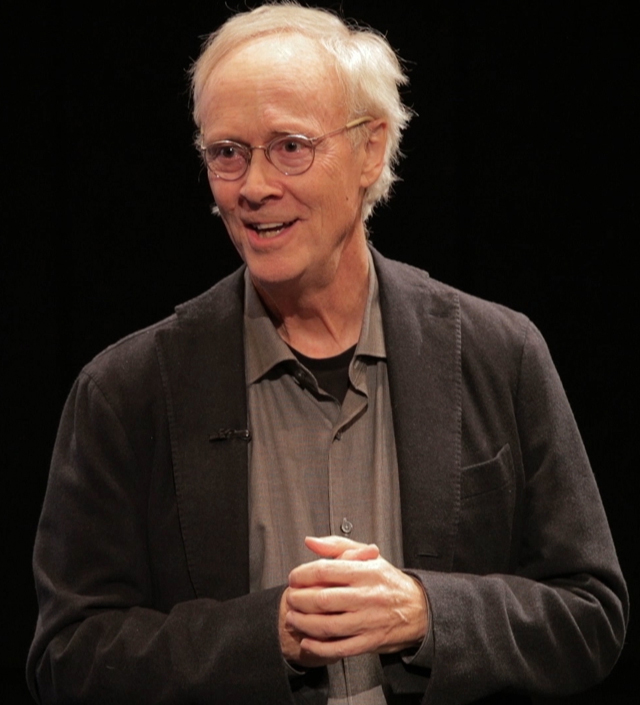America is experiencing an explosion of wealth among high-net-worth and ultra-high-net-worth individuals, and advisors must evolve to meet their changing needs and wants.
That’s according to analysts with the financial research firm Cerulli Associates who recently presented the webinar “The Future of Service Delivery: How to Compete in the HNW/UHNW Market.” The event, on February 28, provided details on the changing HNW landscape and offered tips to advisors on how to stay competitive there.
“This high-net-worth group, those with $5 million or more investable assets, they’ve grown to control roughly half of the investable assets in the United States after only controlling roughly a quarter in 2010,” said Chayce Horton, senior analyst, high-net-worth/wealth management, with Cerulli. Total investable assets among HNW Americans stood at $31 trillion at the end of 2022, he said.
UHNW individuals, those with at least $20 million in investable assets, have also roughly doubled their share, from about 10% in 2010 to about 20%, Horton said, noting that the most recent data is from 2022, when market downturns depressed wealth.
“I wouldn’t be surprised to see this data point today that would indicate to us that high-net-worth households control 50% or even greater than 50%,” he said. “And when we think about this population, we’re really looking at the top 1.8% of households, or the top 2 million wealthiest households in the U.S.”
The trend is in part due to explosive growth in the HNW population. “Overall, since the Great Financial Crisis, the whole population of high-net-worth households in the U.S. has grown on an annualized average basis at about 12% per year, while the population of non-high-net-worth households has increased by only 9% in total over that time period, so less than 1% annually,” Horton said.
This staggering increase in wealth presents opportunities for advisors, but only if they understand the changing wants and needs of HNW and UHNW households and develop a “finely tuned” strategy to meet them, Horton said. “Learning how to service these high-end investors in a meaningful way is really critical for survival,” he said.
Wirehouses Dominate, Independents Gain
As the HNW population has evolved in recent years, so has the financial industry serving it, said Matt Zampariolo, research analyst, wealth management, with Cerulli Associates.
Wirehouse firms, with $4.9 trillion HNW assets under management, and private banks, with $2.8 trillion AUM, continue to be the biggest players in the HNW field. The wirehouse firms — Morgan Stanley, Bank of America, Merrill. Lynch, UBS and Wells Fargo — account for about 30% of HNW assets across the wealth management industry, Zampariolo noted.
But wirehouse firms and private banks are growing at a slower pace than some of their smaller competitors — wirehouses at a five-year compound annual growth rate of 5.5%, and private banks at 6.2%.
In contrast, independent RIAs had $2.1 trillion in HNW assets under management but grew at a 9.8% rate, and hybrid RIAs had $1.5 trillion AUM but grew at a blistering 13.5%. A hybrid RIA has an affiliate broker-dealer so advisors can conduct transactional business, Zamporiolo explained.
“The firms that operate with more of an independent affiliation model have shown great success in recent years, but you absolutely cannot discount the wirehouses and private banks, who still show massive size and scale,” Zampariolo said. “They’re just hugely, hugely productive, close to half a billion client assets on average per advisor, nearly 11,000 advisors across just four firms.”
An industrywide trend
The trend toward advisor independence extends beyond the HNW market, he added. “This is industrywide, even down to the mass market, mass affluent clientele. The independent affiliation models have really blown up in the last few years.”
Another sector, multi-family offices, commands only $1.1 trillion of HNW assets under management, but the concierge-like services they offer are increasingly in demand in the HNW space, Zampariolo said. “Their service model is incredibly high touch, incredibly white glove in the sense that they will really serve any and all client needs for them and their family.”
Actionable Strategies for Success
So, what strategies do firms serving HNW clients pursue to stay competitive?
Horton said they include increasing referrals from existing clients, cited by 34% of firms, and adding/acquiring new clients to increase overall scale, 33%. But three other strategies cited by firms are “most important to focus on and most actionable,” he advised.
- Developing relationships with clients’ children (33%).
- Enhancing technology systems (32%).
- Ability to meet clients’ evolving service preferences (29%).
The first of those three — “next gen” strategies — comes up consistently in Cerulli’s research and is critical because of the massive generational wealth transfer that will be occurring in coming years, Zampariolo said.
Regarding the need to enhance technology, he said, “Competition in the high-net-worth space has ramped up immensely in the past five to 10 years amidst this concentration of wealth creation. And in order to compete in the space, firms have had to be efficient in the delivery of those services. It all has to be seamless information, and functionality has to be readily available.”
A radical shift
The third item — client preferences — has undergone a radical shift in recent years, according to Zampariolo. Traditionally, client relationships have been a key factor in the wealth management industry, he said.
“Over the past couple of years, factors pertaining more toward the attractiveness of services offered — service reputation, service experiences — have actually eclipsed the more traditional relationship-based factors, and among high-net-worth clients are the chief concern when choosing a partner with whom to work.”
As a result, more firms are offering family office-style services to their UHNW clients. In 2017, Cerulli researchers found that high-net-worth practices were on average offering fewer than 10 services as part of their standard offering. Today, they’re offering on average almost 12 as part of their primary or secondary in-house offering to clients, Zampariolo said.
“Technology has also played a major part in enabling firms … to offer more bespoke services, more specialized services with potentially better margins than they have been in the past,” he added.
Income Generation Ranks Low
The increasing importance of family office-style service has coincided with a shift in financial services for HNW clients, said Bing Waldert, managing director, U.S. Research at Cerulli Associates. “What we’ve seen … is financial planning really moving to the center of the relationship, and investments almost becoming a secondary of the part of the relationship,” he said.
According to Cerulli data, the most important objectives cited by HNW practices are wealth preservation, 72%; tax preservation, 63%; wealth transfer strategies, 48%; and risk management, 44%. Income generation is a distant fifth on the list at 35%.
“And we’ve seen wealth preservation always sitting at the top,” added Horton. “You know, these clients by definition are already well off, and they’re much more inclined to worry about keeping and not losing the money they have, rather than potentially growing it or creating more somehow.”
Noting that Cerulli is based in Boston, Horton said a recently enacted “millionaire’s tax” in Massachusetts could foreshadow other tax-the-rich initiatives elsewhere in the country. “And ultimately, this leaves those with seven-, eight-, nine-plus-figure net worth, to put a higher level of importance … on minimizing their exposure to potential taxation,” he said.
Alternative Investments and Direct Indexing Gain Traction
While wealth creation is not top of mind for HNW investors, the group has shifted its investment strategies, with “substantial growth in the alternative space,” Horton said. “ We also consider the growth and adoption of alternative investment solutions as probably the most considerable trend in investment management services in the high-net-worth industry.”
In recent years, allocations to alternative investments have grown to nearly 10% of HNW client portfolios, but UNHW family offices have grown their allocations to “30, 40, 50 and sometimes even greater percent of total portfolio allocations,” Horton said.
Another area of opportunity in the HNW space is direct indexing — maintaining a portfolio that mirrors the performance of a stock index. “Currently, only about half of high-net-worth-focused advisors report to us that they’re using, plan to use, or even would use direct indexing with solutions if they had the access,” Horton said. “And that 50%, we expect that to grow substantially in the coming years.”
The Coming Great Wealth Transfer
Horton said that while wealth concentration, wealth accumulation, and the massive growth of the high-net-worth population has been the most significant demographic trend over the past decade, intergenerational wealth transfer will be the next one.
Cerulli Associates estimates that $84 trillion will be transferred from households to heirs and charities in 25 years, during 2021 to 2045. Of the nearly $73 trillion expected to go heirs, approximately $30 trillion will go to Gen X (ages 40 to 55), $28 trillion to millennials (24 to 39); and $12 trillion to Gen Z (under 24), according to Cerulli estimates.
The children of HNW and UHNW parents are expected to inherit about half a trillion dollars annually in the near term, but that transfer rate will triple to about $1.5 trillion within a decade, Horton said
But all this wealth could be rapidly dissipated by the younger generations, he warned. “The data we collect from both advisors and investors consistently show a high level of attrition across generations. We see a 70%, 80% attrition when those assets are transferred and the children go on to do their own thing.”
Limited interactions are not enough
One problem, he said, is that advisors often fail to make a close connection with younger family members.
“Only 16% of practices, on average, have those clients’ children as established clients, and most of the time those relationships are basically limited interactions,” Horton said. “If you have a simple relationship … like just knowing somebody or being acquainted with them, as is the case in many relationships with clients’ children, we’re finding that it’s just not enough. It’s no longer enough to guarantee success and keeping those assets or acquiring those clients.”
As their name suggests, multi-family offices are better at maintaining relationships with younger generations, through services like family governance and philanthropic management. But other firms can offer similar resources and maintain closer relations with the younger family members, said Horton.
“Really, any firm that can have those family governance resources, next-gen advisors,” he said, encouraging firms to audit their offerings and staffing. “Any firms that can execute on that, in our eyes, have a leg up in terms of getting a better chance at retaining those assets when these transfers do occur.”
Core Services
Zampariolo said four services are “core” to serving HNW clients today: basic financial planning; estate planning; risk management/insurance and tax planning, preparation and compliance. Financial planning is offered by 100% of firms, but estate planning and tax services have grown substantially in importance in recent years, according to Cerulli data. If any of these services seem like a high bar for a firm, outsourcing is the answer, he said.
“Many of the firms that are outsourcing these services may have a really sophisticated network of external professionals that they’ll refer their clients over to in the case that they don’t offer a service internally,” he said.
For example, many firms now offering estate planning have relationships with attorneys and estate planning specialists to whom they can refer their clients. HNW clients are increasingly demanding these and other services, he said.
“And as we’ve kind of constantly alluded to … the wealth transfer is really coming up,” Zampariolo said. “These are no longer value-add services. This is really core — table-stakes services for high-net-worth investors.”
In a four-decade career in journalism, Ed Prince has served as an editor with many of New Jersey’s leading newspapers, including the Star-Ledger, Asbury Park Press and Home News Tribune.







